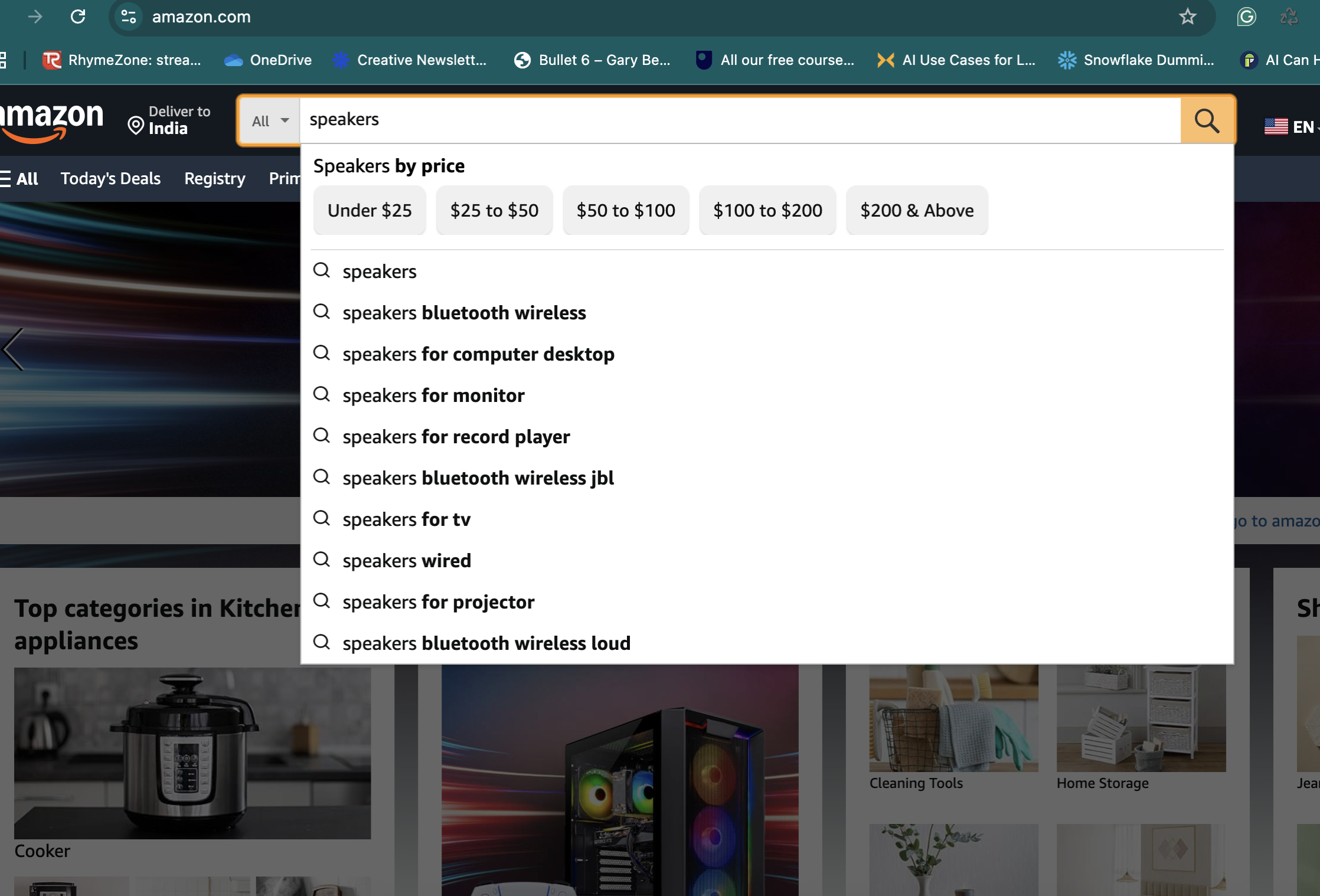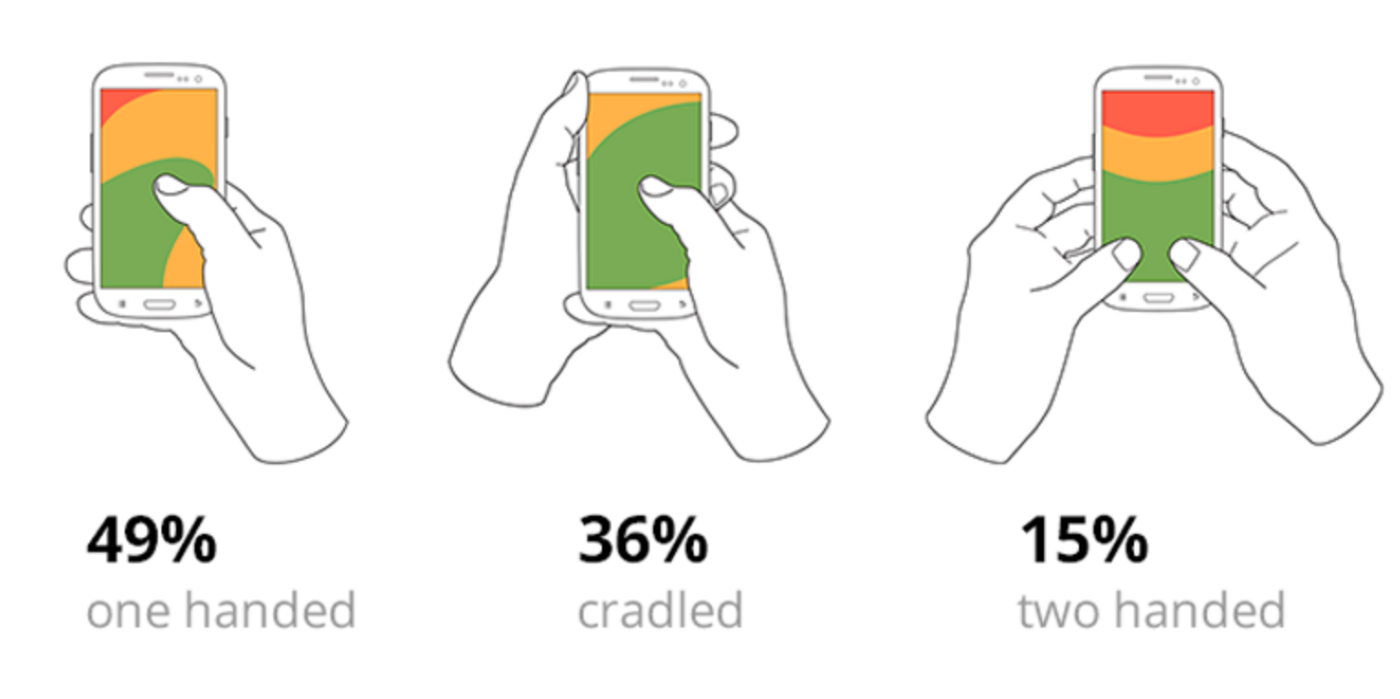How to improve online product discoverability with data
Looking for ways to help right users reach the right products on your website, effortlessly and without taking time? Find out useful strategies listed by our data scientist that will help you improve product discoverability in eCommerce, a major driver in getting more clicks, buys, and revenue.

Thulasi
July 21, 2025 |
12 mins

There are abundant eCommerce platforms around us – big, small, mid-sized, niche-specific. Anything you expect can be in your doorstep in weeks, if not days. But only when I had something particular to find, which I looked for in four to five sites that promised selling them...
I understood product discovery isn’t for the faintest—those who need to find what they what they want, even if they don’t know what they want.
This isn’t just me. 68% website shoppers think the website search function could be better for best experience.
Here’s how improper product discovery looks on an eCommerce platform.
A fashion eCommerce site with 50,000 products -> someone trying to find ‘a turquoise colored shirt’ -> finds irrelevant suggestions (teal isn’t turquoise) -> leaves the site and finds it somewhere else.
When you put humongous efforts into customer acquisition, you must also improve product discoverability to make them stay.
What is product discovery?
Product discovery ticks off three major goals: conversion, engagement, and AOV (Average Order Value), which can be complex to achieve especially in large, SKU-heavy platforms.
Here’s how product discovery helps you achieve the above goals.
Helping users find products on online platforms with minimal typing, mouse movements, and navigation, whether they are actively browsing or not.
Understand in-depth customer expectations and bring products that exactly match them through all channels – ads, search results, emails, bot interactions, and more.
Advanced search functions: understand synonyms, typos, slang, and even vague terms, and show accurate results.
Ways to improve product discovery in eCommerce
From Amazon to Myntra to Nike, here are popular product discovery strategies used by those with effective online presence.
Modern eCommerce companies like Amazon use smart product recommendations, dynamic filters, image-based search, and segment-based customer targeting.
Search functionality
Search function is how users browse and find what they want (and sometimes what they don’t want) through any online platform. But it’s simply not a navigation tool anymore. Powered by data and AI, it has the potential to become a powerful revenue-driving tool, becoming your virtual shop assistant.
Check out the attached image below from Amazon, which pulls down multiple AI-driven suggestions related to the one keyword typed. This is how top eCommerce platforms stay ahead. Enabling users to give the least amount of information yet get the most relevant results (all before you could press ‘ENTER’).

How to improve product discoverability through search functionality?
1 - Autocomplete and auto-suggestions: Like the one above, predicting what user is about to type and auto-completing or share suggestions ‘are you looking for this?’ 2 - Making the search bar prominent: According to Algolia, a simple search bar enlargement and highlighting has boosted a website’s engagement rate by 439%. This is a simple UX improvement that has the potential to get impressive results, creating a conducive environment for product discovery. 3 - More in-depth filters to help users navigate and find what they need, not just factors on basic categories, but also dynamic filters. Example, if the user searches “jackets,” show relevant jacket attributes like material or weather rating. 4 - Smart, NLP-powered search functionality. This turns your search function into an interactive chatbot. Users can even type larger queries like ‘speakers within price range of $100’. Likewise, the search function could pick up context better, understanding synonyms, typos better. 5 - Other modernized search functions like video search, image search, and voice search for relevant product discovery.
Implementation tips to improve search functionality
Go for a third-party solution enhancer or work on the existing search function. Modern eCommerce plugins and platforms already offer autotyping and AI-powered search as options. You can also think about integrating open-source tools like Elastic search, which empowers your search engine with typo tolerance and synonym dictionaries.
Personalized recommendations
Personalized recommendation is the next big thing, which is about bringing what user needs, wherever they are present – web interface, app notifications, email newsletters, and more.
These personalized engines analyze data sources like browsing history, past purchases, items in cart, etc., and suggest products that users might have an affinity for. Why personalizing this? To bring users what they need and improve conversions and revenue with the least amount of effort from both ends.
There are multiple personalization strategies.
1 - Showing customers other complimentary products that might serve as additional accessory to what they are buying through ‘since you like this/bought this’ or ‘frequently bought together'. For example, a customer buying a shovel is also shown a planter, watering can, or other gardening products.
2 - Showing alternative options or product ‘customers who viewed this also bought’ or ‘products you might like’.
3 - Personalization beyond the search function: where everything from product pages to cart is filled with ‘recommended for you’ options. Sending emails, push notifications, and specialized offer notifications based on previous engagement and more like this.
Personalized recommendations need machine learning and AI to work: predict accurately users’ needs based on past patterns. There are many add-on recommendation tools available for eCommerce websites like Algolia, Bloomreach, etc., You can also have a custom-built recommendation tool as well.
If your product categories and number of products are low, you can set up your own recommendation engine by creating rules and logic.
Heard one of the warehouse managers talking about how they get customer orders for out-of-stock or low-in-stock products as they get recommended on the platform? One way to fix this is by connecting inventory management to recommendation logic, where inventory aware discovery happens. You can even go a step further, using retail demand forecasting to pre-prioritize soon-to-be-trending products. A good mix of tech, best mix of AI and ML like time series forecasting, and subject awareness for a steady flow of revenue...
Introducing AI and ML tech
Taking your site across from a regular to an exceptional site with simplistic product discovery needs AI and ML tech. Some of these include introducing chatbots, intelligent searches, and more to create more context-aware shopping experiences. Here are some of the prominent AI and ML tech features for modern eCommerce businesses.
1 - NLP-powered voice querying: The rise of platforms like Alexa, Siri, etc., lead people to use voice queries more. A simple mic enabled search can allow users to ask questions like ‘show me laptops for gaming’ or ‘what’s the best brand for office wear tops’. The answers can be AI summaries along with product recommendations.
2 - Using AI for merchandising and navigation: AI can be helpful in other sides of things as well. For example, you can seamlessly label your products and modify them, so it matches users’ queries.
3 - Similarly, you can re-arrange products in pages depending on user preferences and goals (as most users expect to find the desired product in a few clicks).
4 - Build a strong recommendation engine that suggests users what other products they can choose from. You know 35% of Amazon’s revenue comes from its recommendation engine?
It all starts with identifying pain points that AI/ML can reserve. Depending on your budget, needs, and goals, you can choose from any - turnkey (plugins/apps) to custom (building models in-house).
Better navigation on all devices
59% of global eCommerce sales come from mobile phones. Users simply prefer to search online, lest it is complex purchases where they must use desktop or laptop. What’s more shocking is that 81% of online platforms scored ‘mediocre’ or below that in user experience performance testing.
That shows how mobile and other gadgets become the least priority while optimizing performance, appearance, and navigation.
Here are ways you can maintain better navigation across every digital store you serve.
1 - Make mobile design as touch friendly as possible, highlighting tappable elements well. Keep headers and descriptions minimal, so they don’t take up too much space. Be mindful of the ‘thumb zone’ - important controls should be within the access of the thumb.

2 - Maintain product category hierarchy like a tressure: Create intuitive categories and sub-categories, keeping audience in mind (neither broad nor trench-level).
3 - Keep your mega menu so carefully that user can come to a specific section in a few clicks. Let your menu design consider columns, headings, maybe images or icons for visual aid, along with a space for ‘sale’ or ‘new items’. This is difficult to do on mobile devices with its limited screenspace. You can try ‘hamburger’ style (the ☰ icon) to keep the menu on a corner, that expands and tucks back.
4 - No more stumbling-in-the-dark or gut-feeling based decisions. Do A/B testing and test layout changes, CTA labels, product placements, and discovery paths, especially with real mobile users. Use tech stack’s support: Google Optimize or Adobe Target or custom bandit algorithms for real-time testing.
Remember to keep it as minimal while as informative possible, including navigation aids like breadcrumbs, sticky filter bar, and a clearly visible ‘search icon’.
Monitor and improve with data
Product discoverability isn’t a one-time project. You need to constantly test, improve, and experiment; measuring real-time performance data is one way to do it.
1 - Use Google analytics data and other search logs. If your ‘frequently searched items’ lead less or poor conversions, it indicates a room for improvement for product discovery. Fix product search synonyms, create proper redirects, and track user behavior to find the most relevant search results. 2 - Look beyond the basic metrics. The % of users who chose search bar and navigation. which pages has the most bounce. CTAs with less or zero clicks, what happens after they add to cart, are users scrolling far enough to see recommendations. And the like. Use every insight you captured and turn them into feedback and action. 3 - To get into data analysis, you will need to instrument your website a bit and enable detailed product tagging – tagging products based on attributes, style, theme, weather, and more similar intuitive categories. Product tagging, if done correctly, will lead to more intelligent recommendations and enriched search results.
Recommendation tips: We will suggest going for a proper framework, which needs going beyond the regular GA4 data. There are a plenty of user behavior tracking tools like Hotjar, Crazy Egg, FullStory, etc., which captures qualitative information and recordings. You can aggregate all these metrics and create a custom dashboard, which can be reviewed by your team every week.
Benefits of having product discovery experience in eCommerce
The staggering number of customers who buy what they didn’t intend to buy online shows the importance of product discovery for eCommerce businesses. But this isn’t the only reason.
High conversion rates: Visitors become shoppers when they find what they want, even if they didn’t search for it.
High average order value: Product discovery and recommendations make your website do cross-selling and up-selling, increasing the basket value and order quantities.
Better user experience: What makes you unique among a pool of eCommerce businesses with similar products is the experience you set. When products are well grouped, labelled, suggested, and personalized, user finds it pleasurable to stay longer.
No more slow-moving inventory: With active product discovery efforts, no more products getting sidelined, slow-moving or going undiscovered.
Actionable retail analytics: You get comprehensive and well-rounded insights, what works, what doesn't, what needs to be better, all tuned to your current customers search and browsing patterns.
Should I use AI or machine learning for product discovery?
Product discovery isn’t only about setting rules and categories and writing detailed product descriptions. With customers who crave Netflix-level personalization, one must step up and incorporate ML and AI.
So, the short answer to using AI and ML is yes, and here’s how.
Machine learning for product discovery
1 - Predict user preferences based on past behavior 2 - Run recommendation systems based on collaborative filtering, content-based, and hybrid techniques. 3 - Observe patterns from real-time clicks, cart-adds, skips, and more.
AI and Gen AI for product discovery
1 - To enable natural language search on eCommerce platforms. 2 - Generate personalized product descriptions. 3 - AI-driven shopping assistants to guide users throughout. 4 -To generate dynamic landing pages in high numbers based on shopping persona, user intent, needs, and more.
How to implement ML, AI and Gen AI for product discovery?
There are multiple ways to do it. You can use open-source recommender frameworks – RecBole, LightFM, etc., to build recommender systems and leverage OpenAI, Claude, or Vertex AI to build custom discovery agents, chatbots, and unique product descriptions.
What is the difference between product search and product discovery?
Product search and product discovery are slightly different; product search is to help users find exactly what they are looking for whereas product discovery shows what they didn’t know they wanted.
Factors | Product search | Product discovery |
|---|---|---|
User intent | Clear | Exploratory |
Tech used | Keyword matching, NLP, synonym dictionary | ML, personalization engines, Gen AI-infused chatbots |
Business impact | Better design and UX | Improves engagement, impulsive buys, sales, and revenue. |
The role of data in improving product visibility online?
Data is the backbone of product discovery, making the needle move – be it inventory or product data or user behavior patterns. Here are the different types of eCommerce data you can track along with its role in enhancing visibility.
User behavior data – Analyzing behavior data like clicks, add-to-cart, bounce rates to improve visibility and product discovery.
Campaign data – Finding out top performers dynamically and positioning them on top automatically, especially for high traffic locations.
Inventory and sales data – Real time stock analysis to promote what’s available in nearby stores.
Visual similarity models – The usage of tools and frameworks like TensorFlow, PyTorch, or Amazon Personalize to find out visually similar images from the under-discovered inventories and boost their sales.
Final thoughts
Great product discovery is what sets eCommerce giants like Amazon and Myntra apart. But here’s the good news — you don’t need their budget to compete. With the right mix of analytics and AI, even a growing eCommerce brand can create smarter search, better recommendations, and a more personalized shopping experience.
We help companies find and build the right solutions like recommendation engines, behavior-based search, customer segments, funnel tracking, and dynamic merchandising, all using scalable, cost-efficient tech. The result? Your site feels sharper, your customers find what they need faster, and your sales conversions hit the sky. Let’s talk shop if you're interested in a detailed data audit and consulting with a tech expert.



